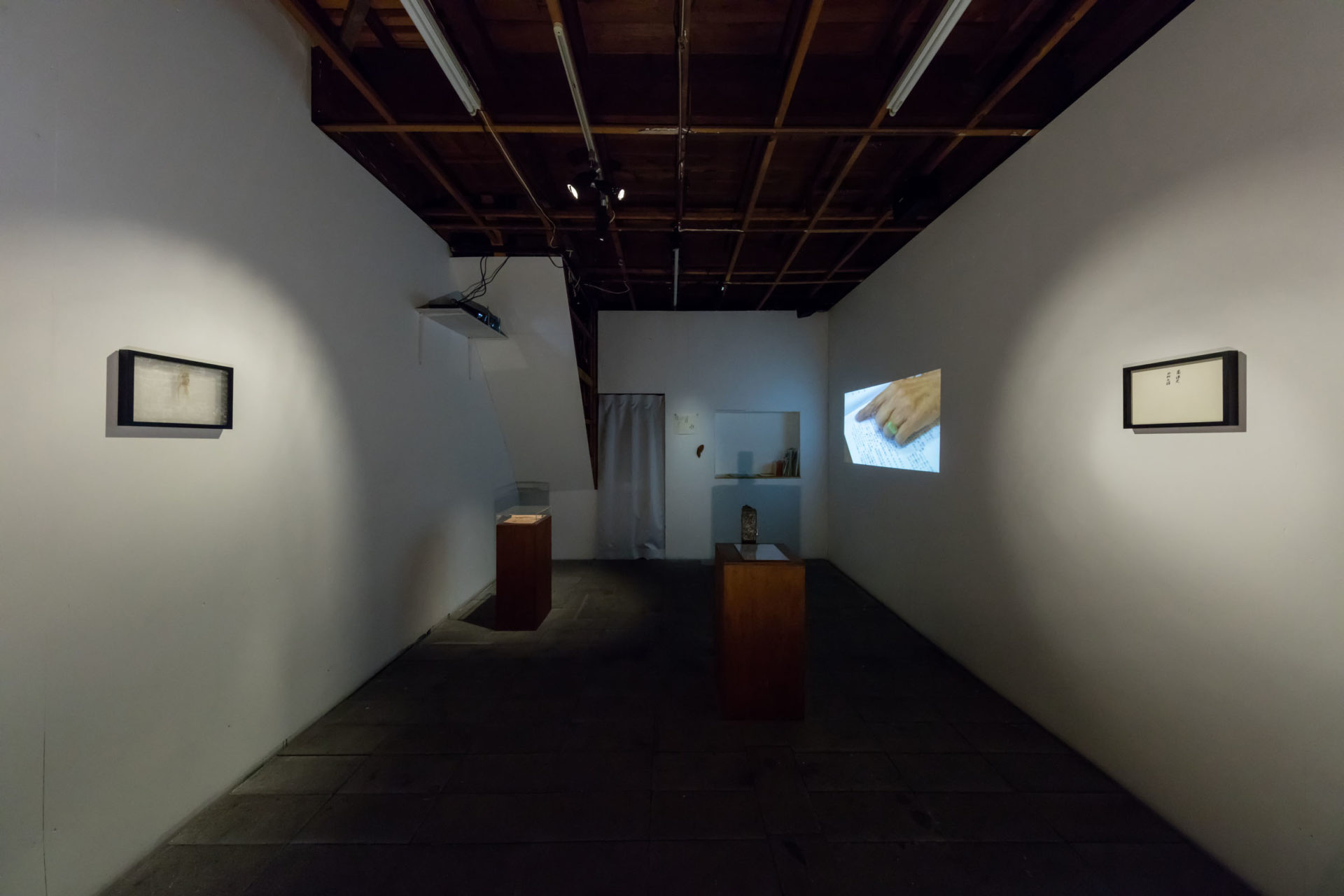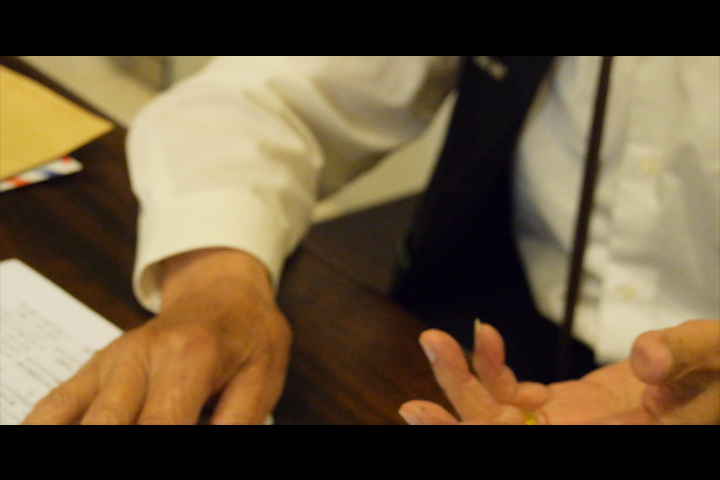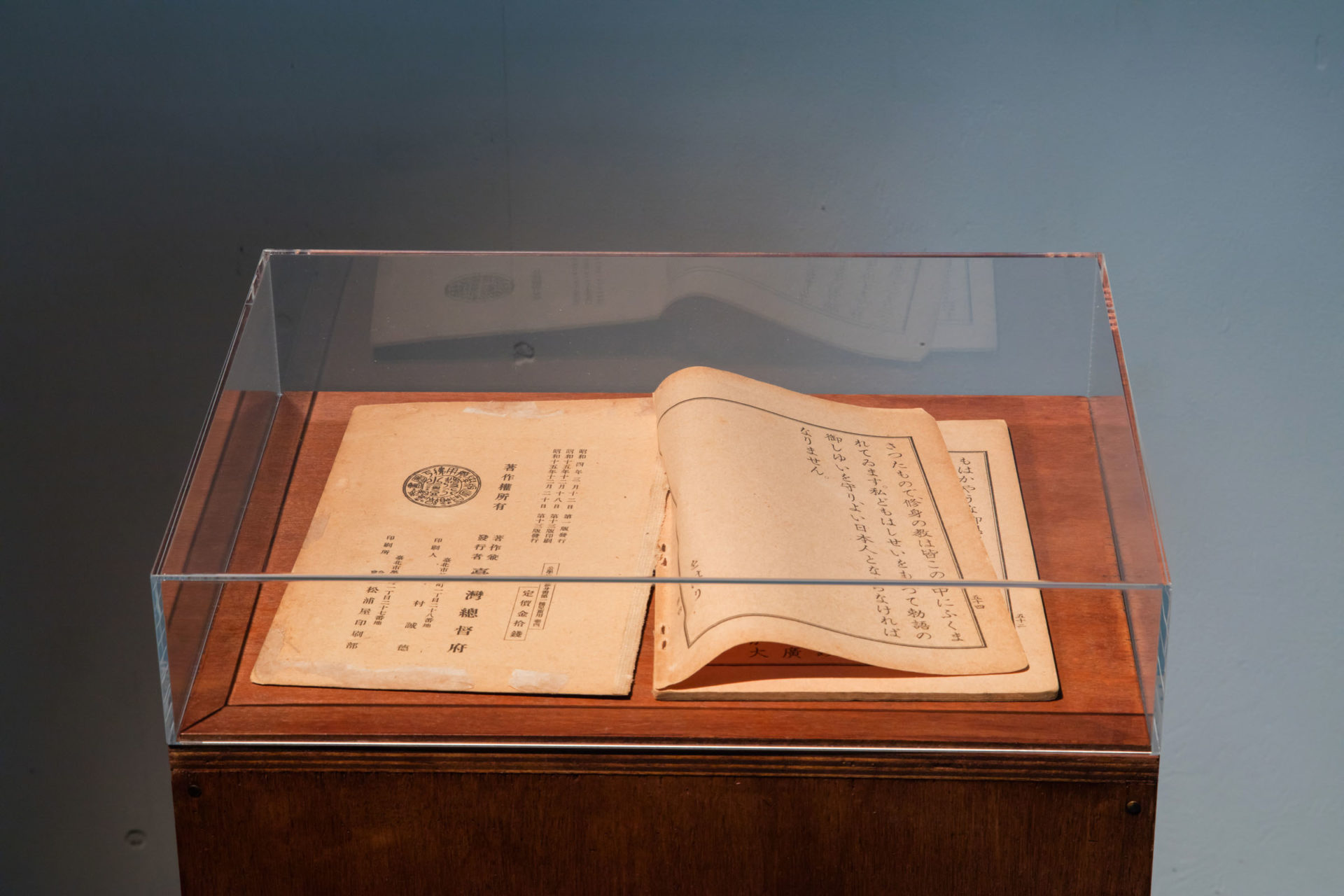2016
映像(22 分42 秒)、説明のためのメモ書き、オーガンジー、刺繍糸、
日本統治時代の台湾公学校用教科書、訪台中にもらった台湾型の木、資料
Installation
(video, a explanatory note, organdie, threads, a Taiwanese elementary textbook from the Japanese occupation, a piece of wood shaped like Taiwan that I gave in Taiwan)
duration of video: 22min 42sec.
日本統治時代に教育を受けた「日本語世代」である台湾出身の簫錦文さん(1926年生)に話を聞き、制作した作品。「西村」は、蕭さんが日本兵として参戦する際に、当時の住所から字を引用して自分自身につけたもう一つの名前だ。
––物事を考えるときには、(頭の中で)今でも日本語を使っている。
言語は、それを使う人の内面に何かしらの影響を与えていて、文字には、それを書く人のそれまでが表れているように思う。
刺繍はほどけてしまえば元の糸に戻ってしまうが、糸に戻ることは再び何かになれる可能性を持つことでもある。そんな刺繍によって、簫さんの二つの痕跡(直筆の台湾名と日本名)の形を起こしてみたいと思った。物量を持った二つの名前は、重なり、影で一つになった。
I made this work by interviewing Hsiao Chin-wen (b. 1926) from Taiwan, was educated during the Japanese colonial era. “Nishimura” is another name that Hsiao gave himself when he joined the Japanese army, taking the words from his address at the time.
“When I think things, I still use Japanese in my head.” – Hsiao Chin-wen
—
I think that language has some kind of influence on personalities of the people who use it, and their handwriting reflect their life.
If embroidery is untied, it will return to the original thread. However, returning to the thread means having the possibility to become something again. I wanted to give the form of Hsiao’s two traces (the handwriting of his Taiwanese name and Japanese name) by such embroidery. Two names that got physical quantity overlapped and became one by their shadows.
 Photo: Ujin Matsuo
Photo: Ujin Matsuo 
 二つの名前 Two names
二つの名前 Two names 

